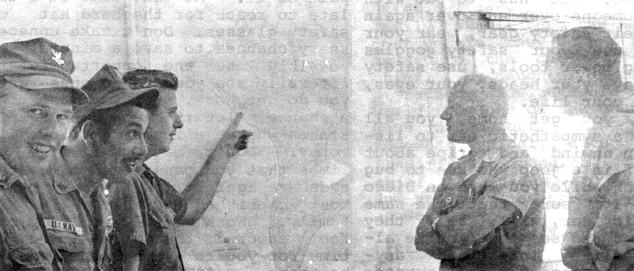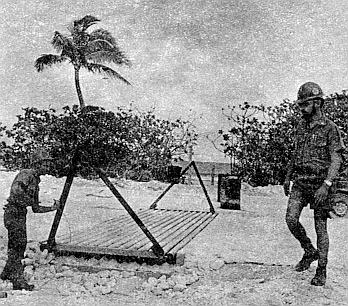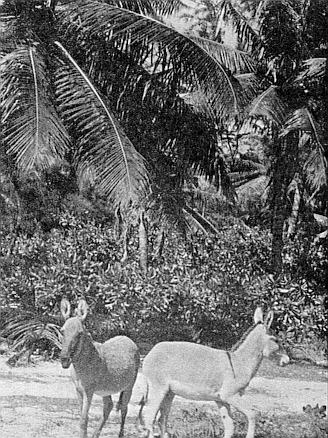 |
The PPDRDG Ministry of Pre-History
presents: wins battle, but loses war! reprinted verbatim from NMCB 74's "Beaver's Tale" September 1973 (many thanks to Carl Villanueva for saving everything from his stay there!) |
|
|
| The TIME: 0800
hours, the DATE: 11 September 1973, the
EVENT: “Operation Donkey”, the RESULT: A
day which will live in infamy.
On this day, 11 September 1973, a caravan of military vehicles and a few brave men on foot set forth to meet the enemy in the person of 17 donkeys and drive them back from the airfield to their own land beyond the recently constructed donkey guard a few miles from the airfield. For those of you not up on donkey guards, it is a series' of pipes laid across the road over an open ditch, which will in theory, stop the donkeys from crossing over once they are on their designated side. At 0800 in the Air Operations building, "Operation Donkey” began with a briefing by LCDR John Canter, British Representative, and an expert in' the field of driving back donkeys. As the briefing ended, the men knew that the next few hours ahead would be some of the most challenging of their lives. The arrival of ram rodders LCDR Leon Sleight and LTJG Ian Molineaux, with champion donkey herder BU2 Dan Hard, gave impetus to the undermanned "Operation Donkey Force'. After finding the donkeys at their usual spot on the airfield, the caravan of vehicles drove the galloping beasts down the runway as the four-legged enemy made for the safety of the jungle. As they ran down the airstrip, two of the braver donkeys, both jacks, broke from the pack in a desperate escape attempt and successfully made it to safety for the moment. The "Operation Donkey Force" still had. the remaining 15 in sight, but they moved into the jungle, although still moving in the direction of the guard. The drama became more intense as a jeep full of foot sailors was emptied out and ordered to the jungle, clubs in hand, ready to flush out the enemy and force them onward. LCDR Canter was there to keep the jungle forces combat ready by making radio contact with vari ous chdck points along the road to the donkey guard. Through the jungle they plodded until a call was received, “We have met the enemy and they are ours.” The donkeys had crossed the guard, but the two renegades still remained. The "Operation Donkey Force" regrouped back at Air ops for further briefing, and it was there that the two remaining enemy were spotted. At the donkey guard command post, coordinated by E01 George Millington, a message was received stating the donkeys were coming down the road and would soon be in view. Sure enough, they came bounding out of the jungle, only a short distance from the guard. Their last obstacle was a barbed wire fence just recently put up. They moved along the fencer found the opening left intentionally for their use, crossed the fence, and were reunited with their loved ones. At approximately 11:15, the caravan
of vehicles carrying the foot sailors and ram
rodders, wearily went back to the camp, the thoughts
of their, battle now a part of their body and
soul. Yes, "Operation Donkey" was a success
and certainly a day that would take its place in
history.
LCDR Sleight (inside right) and LCDR Canter (right) at briefing.
Chief Haynes and LTJG Molineaux tie barbed wire at the donkey guard.
The enemy, as they
looked on that day of infamy.
Editor's note: Eventually it was discovered that the "donkey guard" wouldn't work, and a gate was put across the road. Visit the
Rest of The PPDRDG by Returning
to
the Site Map and Picking Another Page!
Want to use something from this site? See the TERMS OF USE. |


